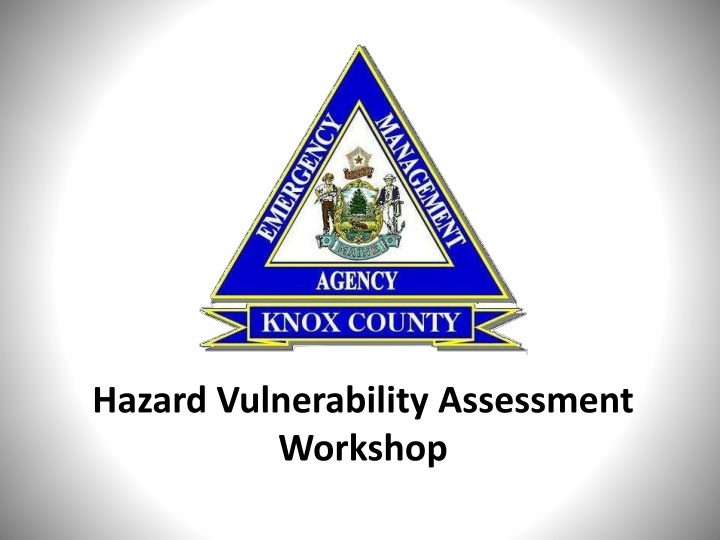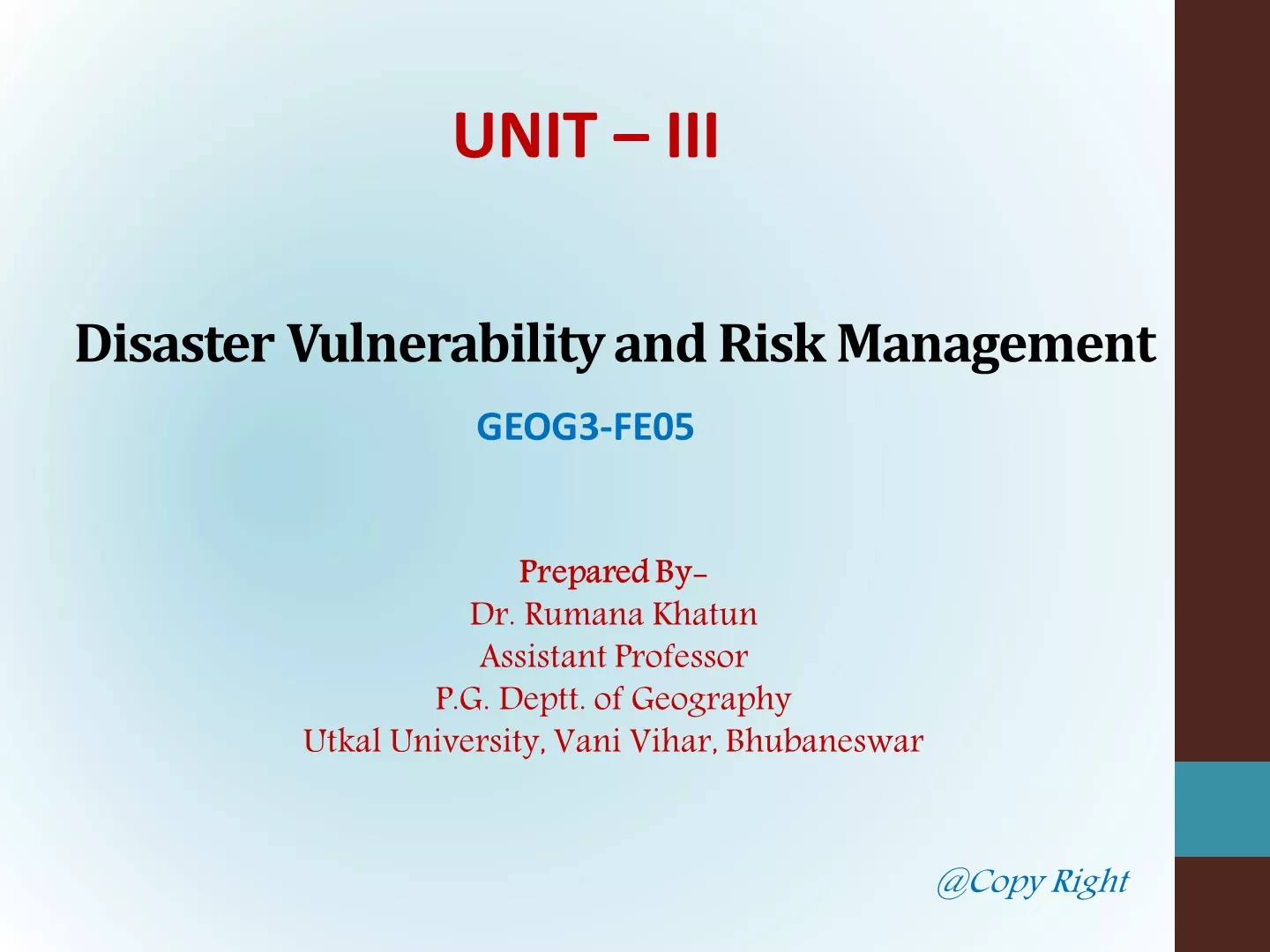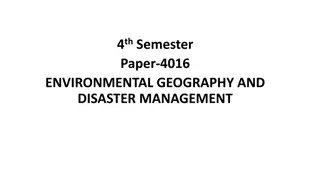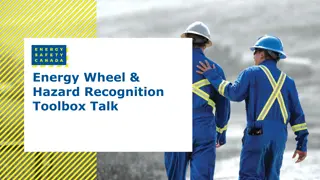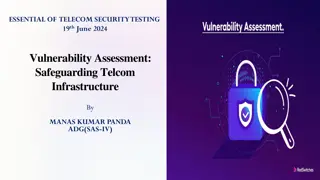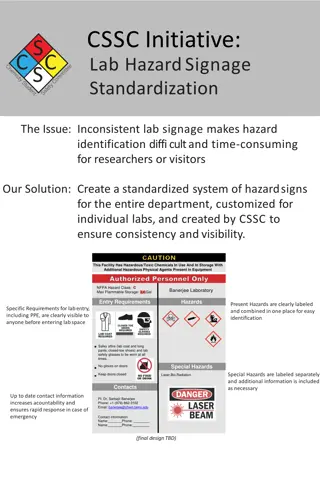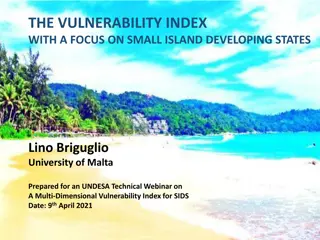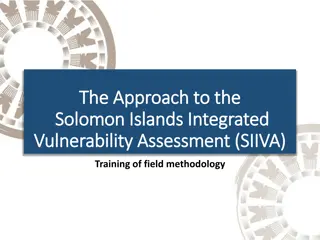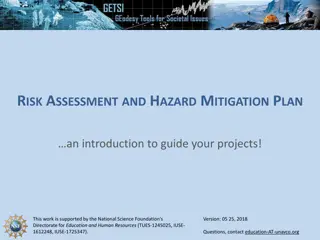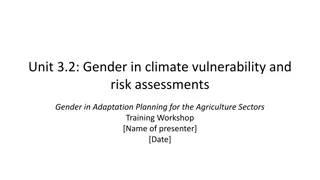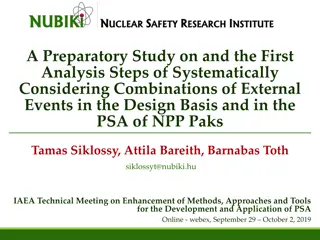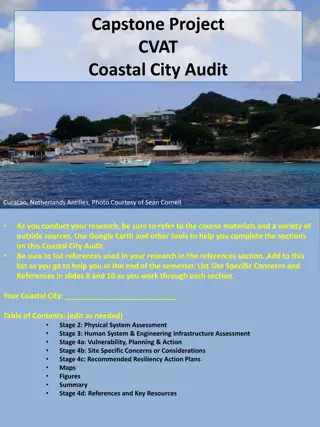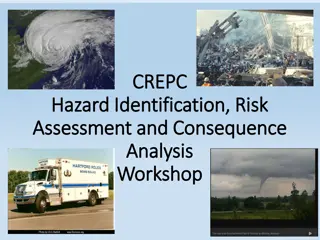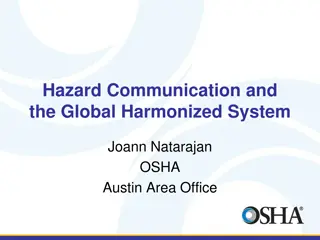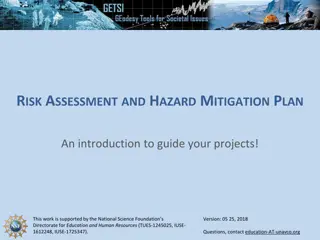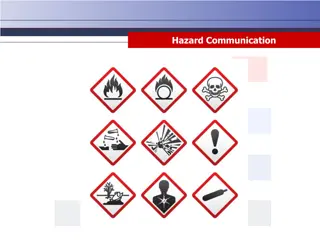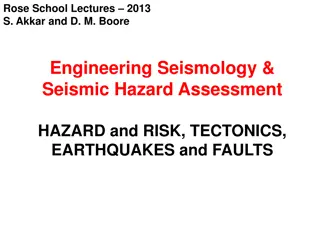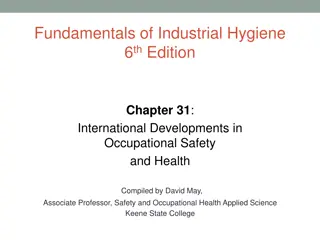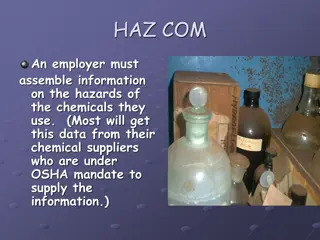Comprehensive Hazard Vulnerability Assessment Workshop and Tools
In this collection of images and descriptions, various aspects of Hazard Vulnerability Assessment (HVA) workshops, tools, and scoring methods are covered. Topics include risk assessment, planning policies, human factors, probability considerations, environmental and non-environmental hazard scoring, and magnitude severity analysis. The content emphasizes the importance of assessing hazards, vulnerabilities, and risks to enhance preparedness and response strategies.
Download Presentation

Please find below an Image/Link to download the presentation.
The content on the website is provided AS IS for your information and personal use only. It may not be sold, licensed, or shared on other websites without obtaining consent from the author.If you encounter any issues during the download, it is possible that the publisher has removed the file from their server.
You are allowed to download the files provided on this website for personal or commercial use, subject to the condition that they are used lawfully. All files are the property of their respective owners.
The content on the website is provided AS IS for your information and personal use only. It may not be sold, licensed, or shared on other websites without obtaining consent from the author.
E N D
Presentation Transcript
Hazard Vulnerability Assessment Workshop
CMS Planning Process Risk Assessment & Planning Policies & Procedures Communication Plan Training & Testing
Hybrid Kaiser Permeante Hazard Vulnerability Assessment Tool
Assessment Tool Probability Human Factor Business Impact Property Impact Internal Response External Response Preparedness
Probability Issues to consider for probability include, but are not limited to: HUMAN IMPACT Known risk Historical data Manufacturer/vendor statistics Possibility of death or injury 0 = N/A 1 = Low 2 = Moderate 3 = High
Probability Scoring Weather and Environmental If a particular hazard has NEVER occurred or cannot occur, the probability would be NULL (0) If a particular hazard has occurred once in the last 100 years, the probability would be LOW (1) If a hazard occurred 2-10 times in the last 100 years, the rating would be MEDIUM (2) If a hazard occurred 11 or more times in the last 100 years, the rating would be HIGH (3)
Probability Scoring Non-Weather and Non-Environmental If a particular hazard has occurred once or never occurred in the last 10 years, the probability would be LOW (1) If a hazard occurred 2-10 times in the last 10 years, the rating would be MEDIUM (2) If a hazard occurred 1 or more times in the last 100 years, the rating would be HIGH (3)
SCORING - MAGNITUDE SEVERITY = (MAGNITUDE - MITIGATION) HUMAN IMPACT PROPERTY IMPACT BUSINESS IMPACT PREPARED- NESS INTERNAL RESPONSE Time, effectivness, resouces EXTERNAL RESPONSE Community/ Mutual Aid staff and supplies Possibility of death or injury Physical losses and damages Interuption of services Preplanning 0 = N/A 1 = Low 2 = Moderate 3 = High 0 = N/A 1 = Low 2 = Moderate 3 = High 0 = N/A 1 = Low 2 = Moderate 3 = High 0 = N/A 1 = High 2 = Moderate 3 = Low or none 0 = N/A 1 = High 2 = Moderate 3 = Low or none 0 = N/A 1 = High 2 = Moderate 3 = Low or none With magnitude the scoring is: 1 = LOW impact at your facility 3 = HIGH impact at your facility
Human Impact Issues to consider for human impact include, but are not limited to: Potential for staff death or injury Potential for patient death or injury
Human Impact Scoring If less than 5% of the staff and residents would be affected, the rating is LOW (1) If 5% to 25% of the staff and residents would be affected, the rating is MEDIUM (2) If over 25% of the staff and residents would be affected, the rating is HIGH (3)
Property Impact Issues to consider for property impact include, but are not limited to: Cost to replace Cost to set up temporary replacement Cost to repair
Property Impact If less than 5% of the property value would be affected, the rating is LOW (1) If 5% to 25% of the property value would be affected, the rating is MEDIUM (2) If over 25% of the property value would be affected, the rating is HIGH (3)
Business Impact Issues to consider for business impact include, but are not limited to: Business interruption Employees unable to report to work Customers unable to reach facility Company in violation of contractual agreements Imposition of fines and penalties or legal costs Interruption of critical supplies Interruption of product distribution
Business Impact Scoring If less than 5% of the business value would be affected, the rating is LOW (1) If 5% to 25% of the business value would be affected, the rating is MEDIUM (2) If over 25% of the business value would be affected, the rating is HIGH (3)
SCORING MITIGATION SEVERITY = (MAGNITUDE - MITIGATION) HUMAN IMPACT PROPERTY IMPACT BUSINESS IMPACT PREPARED- NESS INTERNAL RESPONSE Time, effectivness, resouces EXTERNAL RESPONSE Community/ Mutual Aid staff and supplies Possibility of death or injury Physical losses and damages Interuption of services Preplanning 0 = N/A 1 = Low 2 = Moderate 3 = High 0 = N/A 1 = Low 2 = Moderate 3 = High 0 = N/A 1 = Low 2 = Moderate 3 = High 0 = N/A 1 = High 2 = Moderate 3 = Low or none 0 = N/A 1 = High 2 = Moderate 3 = Low or none 0 = N/A 1 = High 2 = Moderate 3 = Low or none With mitigation the scoring is: 1 = HIGH level of preparedness & response 3 = LOW level of preparedness & response
Preparedness Issues to consider for preparedness include, but are not limited to: Status of current plans Training status Insurance Availability of back-up systems Community resources
Preparedness Scoring If your facility has an up to date emergency plan which has been trained and exercised, the rating would be HIGH (1) If your facility has an emergency plan but it needs work, the rating would be MEDIUM (2) If your facility currently has no emergency plan, the rating would be LOW (3)
Internal Response Issues to consider for response include, but are not limited to: Time to marshal trained staff for an on-scene response for this hazard Scope of response training and capability Historical evaluation of response success
Internal Response Scoring If your facility has sufficient trained staff and has exercised a response (either actual or exercise) to this type of hazard, the rating would be HIGH (1) If your facility does not have a sufficient trained staff and has exercised a response (either actual or exercise) to this type of hazard, the rating would be LOW (3)
External Response Issues to consider for external resources include, but are not limited to: Types of agreements with community agencies Coordination with local and state agencies Coordination with proximal health care facilities Coordination with treatment specific facilities
External Response Scoring If your facility has Memorandums of Agreement with other facilities and agencies and a good working relationship with your local Public Safety Departments and Emergency Management Director, the rating would be HIGH (1) If your facility has not coordinated with outside entities or trained with local agencies, the rating would be LOW (3)
